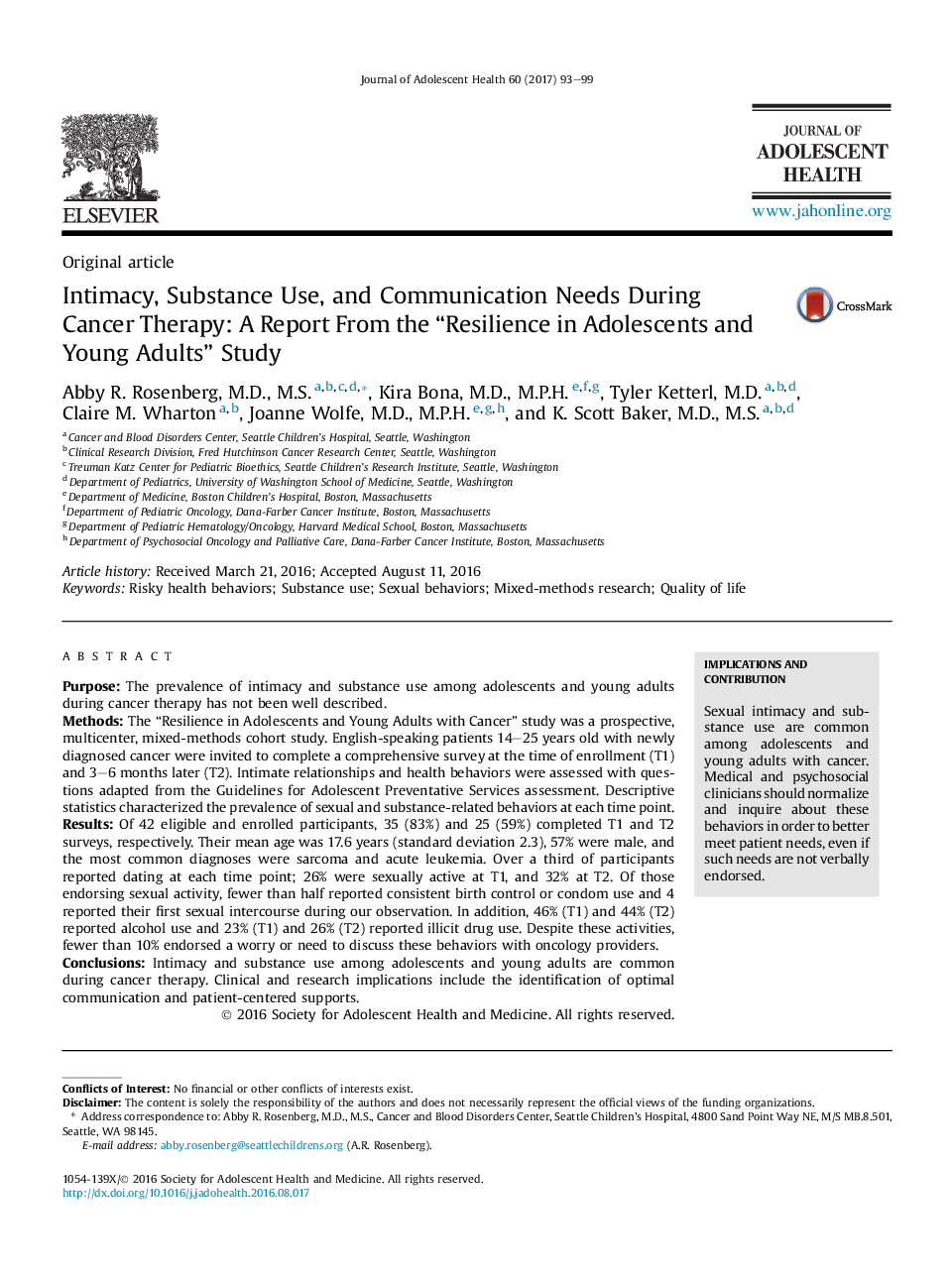| Article ID | Journal | Published Year | Pages | File Type |
|---|---|---|---|---|
| 5121375 | Journal of Adolescent Health | 2017 | 7 Pages |
PurposeThe prevalence of intimacy and substance use among adolescents and young adults during cancer therapy has not been well described.MethodsThe “Resilience in Adolescents and Young Adults with Cancer” study was a prospective, multicenter, mixed-methods cohort study. English-speaking patients 14-25 years old with newly diagnosed cancer were invited to complete a comprehensive survey at the time of enrollment (T1) and 3-6Â months later (T2). Intimate relationships and health behaviors were assessed with questions adapted from the Guidelines for Adolescent Preventative Services assessment. Descriptive statistics characterized the prevalence of sexual and substance-related behaviors at each time point.ResultsOf 42 eligible and enrolled participants, 35 (83%) and 25 (59%) completed T1 and T2 surveys, respectively. Their mean age was 17.6Â years (standard deviation 2.3), 57% were male, and the most common diagnoses were sarcoma and acute leukemia. Over a third of participants reported dating at each time point; 26% were sexually active at T1, and 32% at T2. Of those endorsing sexual activity, fewer than half reported consistent birth control or condom use and 4 reported their first sexual intercourse during our observation. In addition, 46% (T1) and 44% (T2) reported alcohol use and 23% (T1) and 26% (T2) reported illicit drug use. Despite these activities, fewer than 10% endorsed a worry or need to discuss these behaviors with oncology providers.ConclusionsIntimacy and substance use among adolescents and young adults are common during cancer therapy. Clinical and research implications include the identification of optimal communication and patient-centered supports.
